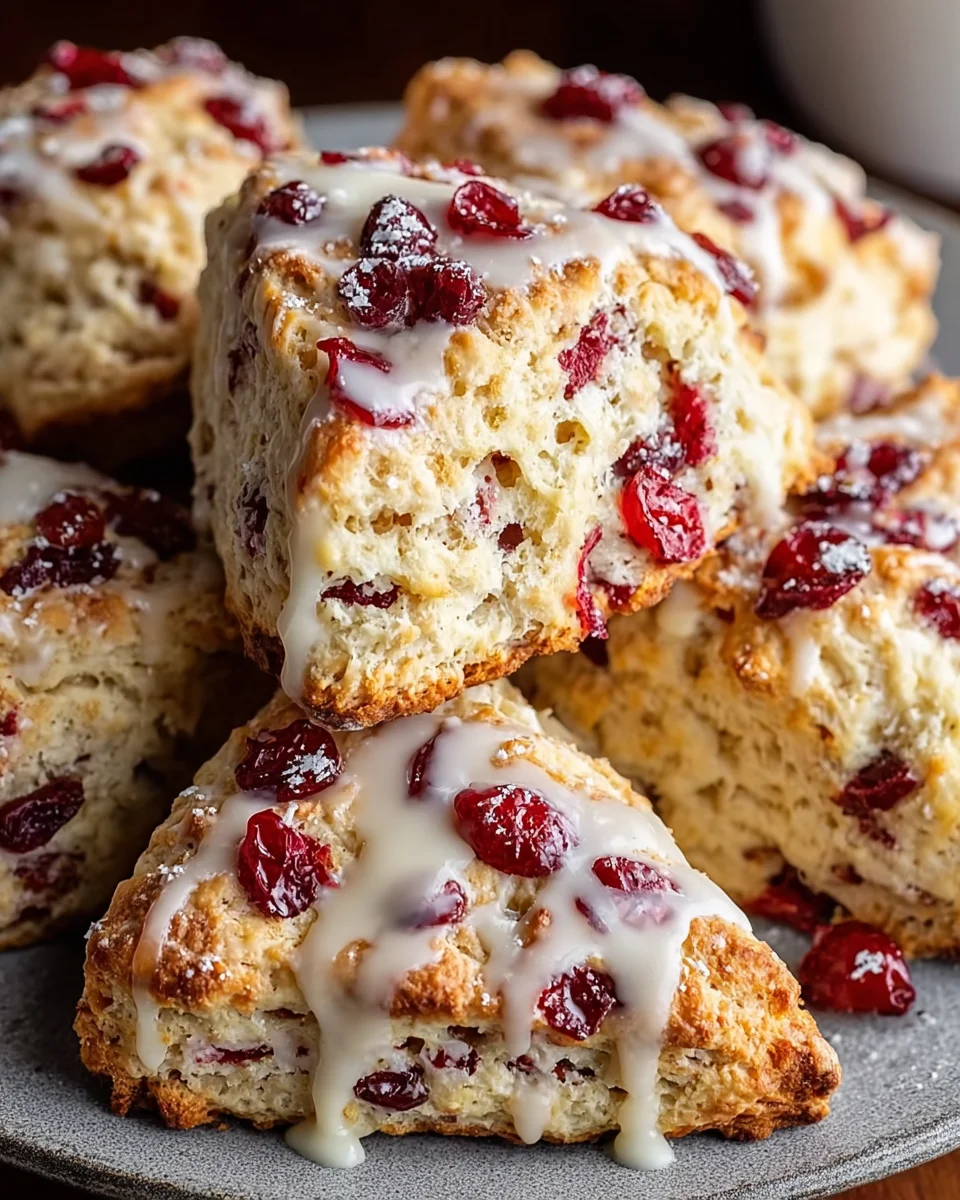Bariatric Tea recipe is rapidly becoming a go-to solution for anyone seeking natural, effective support for their weight loss journey. Unlike harsh detoxes or fad diets, this tea combines gentle, functional herbs like ginger, peppermint, and turmeric that work in harmony with your body. Whether you’re on a post-surgery bariatric plan or simply want to shed a few pounds the healthy way, this tea is packed with science-backed ingredients that target fat, improve digestion, and reduce inflammation.
This comprehensive guide will walk you through how to make bariatric tea step-by-step, explore each ingredient’s unique health benefit, and explain how this warm herbal blend can become your everyday wellness ritual. Plus, we’ll compare it to the popular 4-ingredient weight loss tea, answer burning questions from the web, and bust common myths about herbal weight loss drinks.

Table of Contents
Introduction to Bariatric Tea Recipe
What is Bariatric Tea?
Bariatric tea is a herbal infusion crafted with metabolism-boosting and digestion-soothing ingredients that support weight loss, particularly for those following a bariatric lifestyle. It’s caffeine-free, gentle on the stomach, and made from ingredients commonly found in your kitchen or local health store.
Unlike caffeinated teas or synthetic fat burners, this tea focuses on natural body support—boosting thermogenesis, reducing bloating, and calming cravings.
Why It’s Trending Among Weight Loss Communities
The rise in interest for holistic, non-invasive weight loss options has brought bariatric tea into the spotlight. Here’s why:
- Post-bariatric surgery friendly: Its soothing properties are ideal for sensitive digestive systems.
- Multi-functional: It helps with digestion, inflammation, hydration, and energy.
- Customizable: From sweetener-free to spicy turmeric infusions, you can tailor it to your needs.
Overview of Health Benefits and Natural Ingredients
Let’s break down the key players in the bariatric tea recipe:
| Ingredient | Benefits |
|---|---|
| Ginger | Boosts metabolism, aids digestion |
| Peppermint | Reduces bloating, calms gut muscles |
| Lemon juice | Detox support, adds flavor |
| Turmeric | Anti-inflammatory, supports fat burn |
| Stevia/Monk fruit | Natural sweetness, zero-calorie |

Bariatric Tea
- Prep Time: 5 minutes
- Cook Time: 10 minutes
- Total Time: 15 minutes
- Yield: 1–2 servings 1x
- Category: Drink
- Method: Boiling
- Cuisine: International
- Diet: Vegetarian
Description
Bariatric Tea recipe is rapidly becoming a go-to solution for anyone seeking natural, effective support for their weight loss journey. Unlike harsh detoxes or fad diets, this tea combines gentle, functional herbs like ginger, peppermint, and turmeric that work in harmony with your body. Whether you’re on a post-surgery bariatric plan or simply want to shed a few pounds the healthy way, this tea is packed with science-backed ingredients that target fat, improve digestion, and reduce inflammation.
Ingredients
1 cup of hot water
1 tablespoon of fresh ginger (or 1 teaspoon ginger powder)
1 teaspoon of dried peppermint leaves (or 1 peppermint tea bag)
1 teaspoon of lemon juice (optional)
1–2 teaspoons of stevia or monk fruit (optional, for sweetness)
A pinch of turmeric (optional for extra anti-inflammatory benefits)
Instructions
Boil Water: Start by boiling water in a kettle or small pot.
Prepare Ginger and Peppermint: If using fresh ginger, grate or chop it finely. Place the ginger and peppermint leaves in a tea infuser or directly into the water (if you don’t mind some floating bits).
Add Optional Ingredients: If using turmeric, add a pinch to the water, along with a squeeze of fresh lemon juice and your sweetener of choice (stevia or monk fruit).
Brew: Pour the boiling water over the ginger, peppermint, and other ingredients. Let it steep for about 5-10 minutes.
Strain & Serve: If you used loose ingredients, strain the tea into your cup. Otherwise, remove the tea bag.
Enjoy: Sip the tea slowly to enjoy its soothing, refreshing qualities.
Notes
Adjust the Ingredients: You can modify the amount of ginger or peppermint to suit your taste preferences. Fresh vs. Dried: Fresh ginger offers a stronger flavor and more nutrients, but dried ginger or ginger powder works just fine. Optional Sweeteners: While some prefer the tea without sweetness, using a natural sweetener like stevia or monk fruit can make the tea more enjoyable for those who prefer a sweeter taste. Turmeric: This spice adds anti-inflammatory benefits, which can support digestion and help with weight loss. Caffeine-Free: This tea is naturally caffeine-free, making it perfect for any time of day.
Nutrition
- Serving Size: 1 cup
- Calories: 15-30
- Sugar: 0g
- Sodium: 0mg
- Fat: 0g
- Saturated Fat: 0g
- Unsaturated Fat: 0g
- Trans Fat: 0g
- Carbohydrates: 1g
- Fiber: 0mg
- Protein: 0mg
- Cholesterol: 0mg
Bariatric Tea Recipe – Step-by-Step Instructions
Complete Ingredient List With Optional Add-ins
To make a bariatric tea recipe that’s both effective and enjoyable, you’ll need only a few key ingredients. Most of these are pantry staples or can be found easily at any grocery store or health food market.
Core Ingredients:
- 1 cup of hot water
- 1 tablespoon of fresh ginger (or 1 teaspoon of ginger powder)
- 1 teaspoon of dried peppermint leaves (or 1 peppermint tea bag)
Optional Add-ins:
- 1 teaspoon of lemon juice (for flavor and detox support)
- 1–2 teaspoons of stevia or monk fruit (for natural, sugar-free sweetness)
- A pinch of turmeric (for added anti-inflammatory benefits)
Each of these ingredients has a specific role. Ginger revs up your metabolism, peppermint supports digestion, and turmeric helps combat inflammation, which is often tied to weight retention.
How to Prepare Bariatric Tea Recipe Correctly
Follow this easy 5-step method to make your tea fresh every time:
1. Boil Water
Bring 1 cup of water to a rolling boil using a kettle or small pot.
2. Prepare Ginger and Peppermint
- If using fresh ginger, grate or finely chop it.
- Place the ginger and peppermint leaves (or tea bag) into a tea infuser or teapot.
3. Add Optional Ingredients
Add your extras—turmeric, lemon juice, and a sweetener like monk fruit or stevia—directly into the tea infuser or cup.
4. Brew the Tea
Pour hot water over the mixture. Let it steep for 5–10 minutes, depending on how strong you want the flavor and potency.
5. Strain & Serve
Strain the tea into a cup if you used loose ingredients. Sip it slowly, and enjoy warm for best results.
Tips for Flavor Adjustment and Storage
- Too strong? Steep for a shorter time or reduce ginger.
- Too bland? Add more lemon juice or a dash of cinnamon.
- Making a bigger batch? You can double or triple the recipe and store it in the fridge for up to 2 days. Just reheat before drinking—avoid boiling again to retain nutrients.
- Don’t over-sweeten: Aim for a mildly sweet taste using zero-calorie sweeteners to keep it bariatric-safe.
Understanding the Science Behind Bariatric Tea Recipe
The Role of Ginger in Boosting Metabolism
Ginger is one of the most important components of the bariatric tea recipe. It’s not just a flavor enhancer—it plays a scientifically backed role in helping your body burn fat more efficiently.
Here’s how:
- Thermogenesis Activation: Ginger increases your body temperature slightly, encouraging calorie burn even at rest.
- Improved Insulin Sensitivity: Helps your body process carbs more effectively and prevents fat storage.
- Appetite Regulation: Ginger can naturally reduce hunger and delay gastric emptying.
In one 2020 study, participants who consumed ginger tea daily saw a significant reduction in BMI and waist circumference over four weeks.
Peppermint’s Impact on Digestion and Fat Loss
Peppermint isn’t just cooling and refreshing—it plays a strategic role in the weight loss mechanism of this herbal blend.
- Soothes the Digestive Tract: Relaxing gut muscles leads to better digestion and less bloating.
- Reduces Appetite: The menthol in peppermint may reduce hunger cues.
- Natural Diuretic: Encourages gentle detox through increased urination without dehydration.
Combined with ginger, peppermint enhances digestion, ensuring nutrient absorption is optimized—key for post-bariatric patients or those struggling with gut sensitivity.
Turmeric and Lemon: Inflammation and Detox Combo
When it comes to inflammation—a major contributor to weight retention and chronic fatigue—turmeric is a game-changer. Curcumin, the active compound in turmeric, targets inflammatory markers that can sabotage weight loss.
Meanwhile, lemon juice:
- Alkalizes the body, reducing cravings.
- Is rich in vitamin C, boosting immunity and supporting collagen production (helpful during weight loss).
- Promotes bile production, aiding fat digestion.
Together, turmeric and lemon provide a potent detoxifying and anti-inflammatory punch, giving this tea a holistic edge over generic weight loss drinks.
How Bariatric Tea Recipe Supports Weight Loss Goals
Fat Burning Properties of Herbal Ingredients
The unique combination of ginger, peppermint, lemon, and turmeric makes this tea a natural thermogenic powerhouse. Here’s how each ingredient helps the body burn fat:
- Ginger raises internal temperature slightly, which boosts calorie burn even while at rest.
- Peppermint improves digestion and reduces gas, helping the stomach appear flatter.
- Turmeric reduces inflammation, which can hinder fat metabolism.
- Lemon juice acts as a digestive cleanser and liver supporter—essential for metabolizing fat.
When taken consistently, this blend can support a gradual reduction in weight, especially when combined with proper diet and movement.
Appetite Suppression and Craving Control
One of the most underestimated benefits of the bariatric tea recipe is its ability to control appetite naturally. How?
- The strong ginger and peppermint flavor profile reduces sweet cravings.
- Warm beverages like this tea promote satiety, keeping you full longer.
- Stevia or monk fruit adds natural sweetness without triggering insulin spikes.
Drinking it before meals can help reduce overall calorie intake without relying on harsh appetite suppressants.
Boosting Metabolism and Reducing Bloating
Many people mistake bloating for belly fat. This tea works to resolve both:
- Peppermint calms the GI tract, preventing gas and bloating.
- Lemon juice helps flush sodium, which can cause water retention.
- Turmeric and ginger accelerate digestion and promote gut balance.
The result? A leaner, lighter feeling without diuretics or chemical stimulants.
The Red Ingredient in Bariatric Tea Recipe – What Is It?
Exploring Red Ginger and Its Benefits
When people ask, “What is the red ingredient in bariatric tea?”, they’re often referring to red ginger, a more potent variant of the common ginger root. Native to Southeast Asia, red ginger (also known as Zingiber officinale var. rubrum) is darker in color and spicier in flavor, packed with stronger active compounds.
Why it’s popular in weight loss teas:
- Higher gingerol concentration: Red ginger contains more gingerol than standard yellow ginger, offering stronger anti-inflammatory and thermogenic effects.
- Faster fat-burning potential: Studies show red ginger may increase fat oxidation better than regular ginger.
- Boosts immunity and circulation: Important for post-surgery healing and metabolic performance.
If you see reddish tint in some tea blends or powders, red ginger is often the cause.
Can Hibiscus Be a Red Ingredient Alternative?
Yes, and it’s becoming a popular choice in bariatric blends. Hibiscus tea offers a bold red hue along with major health benefits:
- Rich in antioxidants: Helps fight oxidative stress and improves liver health.
- Mild diuretic: Reduces water retention and bloating.
- Lowers blood pressure: A major bonus for bariatric and diabetic individuals.
You can steep dried hibiscus petals with your ginger-peppermint mix to get a beautiful red bariatric tea variation.
The Role of Color in Herbal Formulations
Why is color important in herbal teas?
- Visual appeal increases user consistency. People drink what they love to see.
- Color can signal antioxidant density—reds and purples in tea (from ginger or hibiscus) often come from anthocyanins and flavonoids.
- Red teas often signal warmth and circulation boosters, perfect for metabolism activation.
So, while not every bariatric tea recipe includes a red ingredient, it can be a powerful upgrade both in performance and enjoyment.
Bariatric Tea vs. 4-Ingredient Weight Loss Tea
Key Differences in Formulation and Results
Many readers wonder, “What is the difference between bariatric tea and 4-ingredient weight loss tea?” While they may seem similar on the surface, they serve different purposes and use distinct ingredients.
| Feature | Bariatric Tea Recipe | 4-Ingredient Weight Loss Tea |
|---|---|---|
| Ingredients | Ginger, peppermint, turmeric, lemon (optional) | Ginger, lemon, turmeric, cayenne pepper |
| Purpose | Gentle, sustainable metabolism boost & digestion | Intense detox and fat burn |
| Suitability | Ideal for bariatric patients and sensitive stomachs | May be too harsh for post-op digestion |
| Taste Profile | Refreshing and minty with light spice | Spicy and citrus-heavy |
| Daily Use | Yes, 1–2 cups/day | Occasional use (2–3 times/week max) |
Bariatric tea is built for consistency and long-term support, while the 4-ingredient version is best used short-term due to its intensity.
Comparing Active Ingredients
Let’s break it down further:
- Ginger & Turmeric: Both teas include these, but bariatric tea uses less to avoid gastric irritation.
- Peppermint (Bariatric Tea): Unique to this recipe, peppermint cools and calms digestion.
- Cayenne Pepper (4-Ingredient Tea): This adds serious heat and thermogenesis but can irritate the gut.
- Stevia or Monk Fruit (Optional in Bariatric Tea): Sweetens without insulin spikes—absent in the spicy 4-ingredient version.
If you have gut sensitivities, the bariatric tea recipe is more suitable for long-term use. It can be consumed daily without digestive side effects.
When to Use Each for Maximum Benefit
| Your Goal | Best Tea Option |
|---|---|
| Daily weight management routine | Bariatric Tea |
| Occasional detox/reset | 4-Ingredient Weight Loss Tea |
| Sensitive stomach | Bariatric Tea |
| Quick calorie-burn pre-workout | 4-Ingredient Tea (with caution) |
Best Time to Drink Bariatric Tea for Results
Morning vs. Night: Which Is More Effective?
Timing your bariatric tea recipe consumption can play a big role in how effective it is for weight loss. While both morning and evening have benefits, they work differently:
| Time of Day | Benefits |
|---|---|
| Morning | Kickstarts metabolism, reduces cravings before breakfast, and supports digestive regularity. |
| Night | Calms the digestive system, reduces bloating before bed, and can help curb late-night snacking. |
Recommendation: For best results, drink one cup in the morning on an empty stomach, and optionally, a second cup in the evening after dinner.
Drinking Before Meals – Does It Work?
Absolutely. In fact, drinking this tea 15–30 minutes before a meal can enhance weight loss in two key ways:
- Appetite Control: Warm liquids reduce hunger signals, helping you feel satisfied with smaller portions.
- Improved Digestion: Ingredients like peppermint and ginger prep the stomach to digest food efficiently, which means fewer calories stored as fat.
Many bariatric experts recommend this habit for long-term weight loss success.
Hydration Tips to Complement Tea Consumption
While the bariatric tea recipe is hydrating, you still need to maintain overall fluid intake throughout the day. Here’s how to balance it:
- Drink 8–10 glasses of water daily in addition to your tea.
- Add cucumber or lemon slices to water for extra detox power.
- Avoid sugary drinks that counteract the benefits of herbal teas.
Common Mistakes When Making Bariatric Tea Recipe
Overboiling or Under-Steeping the Herbs
When preparing the bariatric tea recipe, one of the most frequent mistakes is mismanaging water temperature and steeping time.
- Overboiling fresh ginger or peppermint can destroy delicate nutrients and essential oils. You don’t need a rolling boil for the entire process—just bring water to a boil, then pour it over the herbs.
- Under-steeping will lead to a weak brew with minimal benefits. Aim to steep the mixture for at least 5–10 minutes to extract its full therapeutic potential.
Pro Tip: Use a tea infuser or fine mesh strainer for optimal infusion and easy cleanup.
Using Low-Quality Ingredients
The healing power of your bariatric tea depends entirely on ingredient quality. Many store-bought dried herbs are stale and weak.
Avoid these pitfalls:
- Pre-ground ginger powders that are old or low in gingerol.
- Peppermint bags with fillers or flavor additives.
- Low-grade turmeric with artificial colorants or poor absorption.
Instead, choose:
- Fresh organic ginger root or high-quality powder.
- Loose-leaf peppermint or organic peppermint tea bags.
- Certified turmeric with black pepper or liposomal forms (if using supplements).
You’re crafting a medicinal brew—treat it like medicine and source your ingredients mindfully.
Sweetener Issues – Natural vs. Artificial
Trying to cut calories? That’s great—but don’t cancel the benefits of your tea by using the wrong sweetener.
Avoid:
- Artificial sweeteners like sucralose and aspartame—they can disrupt gut health and insulin signaling.
- Sugar or honey if you’re following a strict bariatric or low-carb plan.
Stick to:
- Stevia (preferably liquid or leaf form)
- Monk fruit extract with no additives
Success Stories and Testimonials
Real Users’ Experiences with Bariatric Tea Recipe
The best proof of the bariatric tea recipe’s power? People just like you are using it to support their weight loss and health goals—and getting results.
“After my gastric sleeve surgery, my digestion was very sensitive. This tea soothed my stomach, helped reduce bloating, and even curved my appetite between meals.”
— Melissa H., Dallas, TX
“I started drinking it in the morning before breakfast and again after dinner. Within a few weeks, my cravings dropped and I had lost five pounds without changing anything else!”
— Greg T., San Diego, CA
Before-and-After Insights
A number of bariatric patients and health enthusiasts have reported measurable changes after incorporating this tea:
| Timeframe | Observed Benefits |
|---|---|
| Week 1 | Reduced bloating, easier digestion |
| Week 2 | Less snacking, increased energy |
| Week 3–4 | Notable fat loss in belly area, lighter feeling |
| Beyond Month 1 | More stable metabolism, improved gut health |
Keep in mind, this tea isn’t a quick fix—it’s a daily wellness tool that compounds over time.
Expert Tips from Nutritionists
Many dietitians recommend this recipe due to its gentle profile and functional benefits.
“Bariatric tea is one of the few weight-loss drinks that supports hydration, digestion, and anti-inflammatory pathways all in one cup. It’s especially valuable post-surgery or during fat-loss plateaus.”
— Laura Jensen, RDN
FAQs Bariatric Tea Recipe
How do you make bariatric tea?
To make bariatric tea, start by boiling 1 cup of water. Add 1 tablespoon of grated fresh ginger (or 1 teaspoon ginger powder), 1 teaspoon dried peppermint leaves (or 1 tea bag), and optional ingredients like lemon juice, stevia or monk fruit, and a pinch of turmeric. Steep for 5–10 minutes, strain, and enjoy warm.
What is 4-ingredient weight loss tea?
This tea typically includes ginger, lemon, turmeric, and cayenne pepper. While effective for short-term detox, it’s spicier and may not be as gentle on the stomach as bariatric tea, which includes peppermint and optional sweeteners for better digestion and taste.
What is the red ingredient in bariatric tea?
The red hue often comes from red ginger or hibiscus petals. Red ginger has more potent thermogenic and anti-inflammatory properties, while hibiscus adds antioxidants and a rich red color.
What is the most powerful tea for weight loss?
Green tea and oolong tea are often cited, but bariatric tea stands out for its multi-functionality—supporting fat burn, digestion, appetite control, and inflammation—all with minimal side effects.
Conclusion Bariatric Tea Recipe
The bariatric tea recipe isn’t just another weight loss trend—it’s a trusted wellness habit supported by nature and science. With ingredients that promote metabolism, soothe digestion, and fight inflammation, this tea is perfect for daily use—especially if you’re on a weight loss or post-bariatric journey.
Whether you’re looking to lose weight, reduce bloating, or simply feel better from the inside out, adding this tea to your routine can be a game-changer.
Check out Pink Salt Trick Recipe for the Best Morning Detox to pair with your tea for even faster results.
For more creative baking inspiration and marketing ideas, explore the Pinterest







